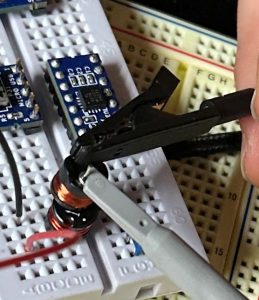https://youtube.com/shorts/qfVXAoujZhY?feature=share
This week, I got a single key to communicate via BLE to a controller. When the key was pressed, an LED on the switch and receiver will light up. I first started by finding an appropriate BLE library for arduino, which ended up being ArduinoBLE. From here, I defined a ledService for turning on and off the LED with a ByteCharacteristic to send the key press state. Debugging and troubleshooting took a lot of time because sometimes the device would fail to connect, but after a reset or a reflash, would work all of a sudden. This was solved after removing the serial initialization, when I realized that the device would lose power after being unplugged and before switching over to LIPO power, which caused the code to run again, which led it to continuously wait for a serial connection to the computer.
I believe my progress is on schedule, as I am scheduled to have a single key working this week. From what I gathered, I believe implementing multiple keys will not be too difficult.
Next week, I will try to implement multiple keys communicating with the central microcontroller, where each key module will be able to wireless transmit the pressed or unpressed state to the key.
18-220 was a great help to the progress this week, as it introduced me to the Arduino IDE and how to install various packages and program the correct board. Additionally, I applied my 18-349 experience of reading datasheets to determine pinouts and functionality (which is how I determined which pins to hook up the switch and the battery to). Additionally, Embedded taught me how to use minicom, which helped with debugging (since the Arduino IDE only lets you open a single serial terminal at once). Finally, the programming knowledge was learned during the last 2 weeks when I was researching the BLE protocol and how to implement it through arduino.







